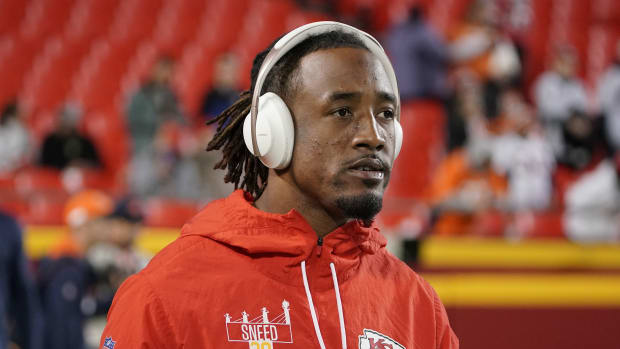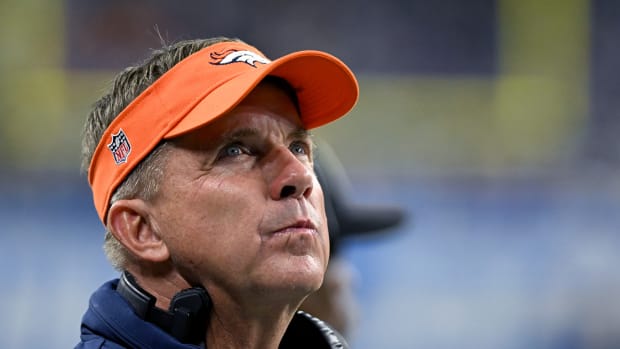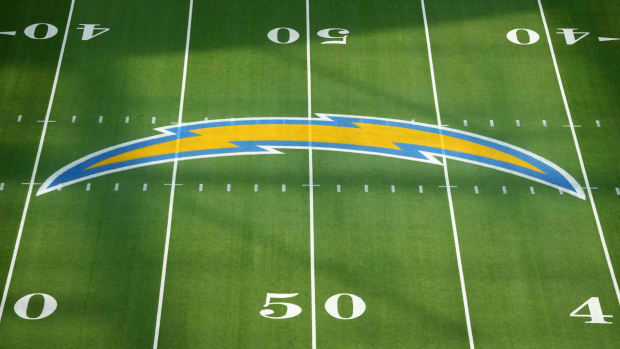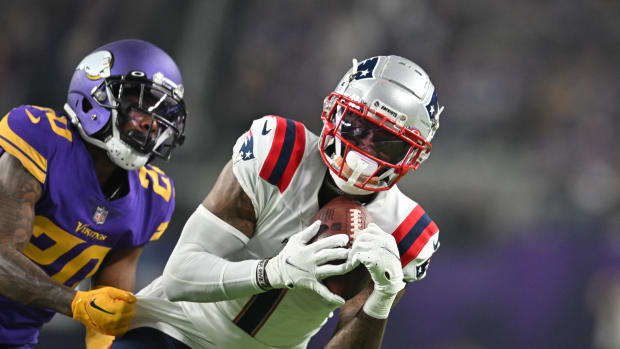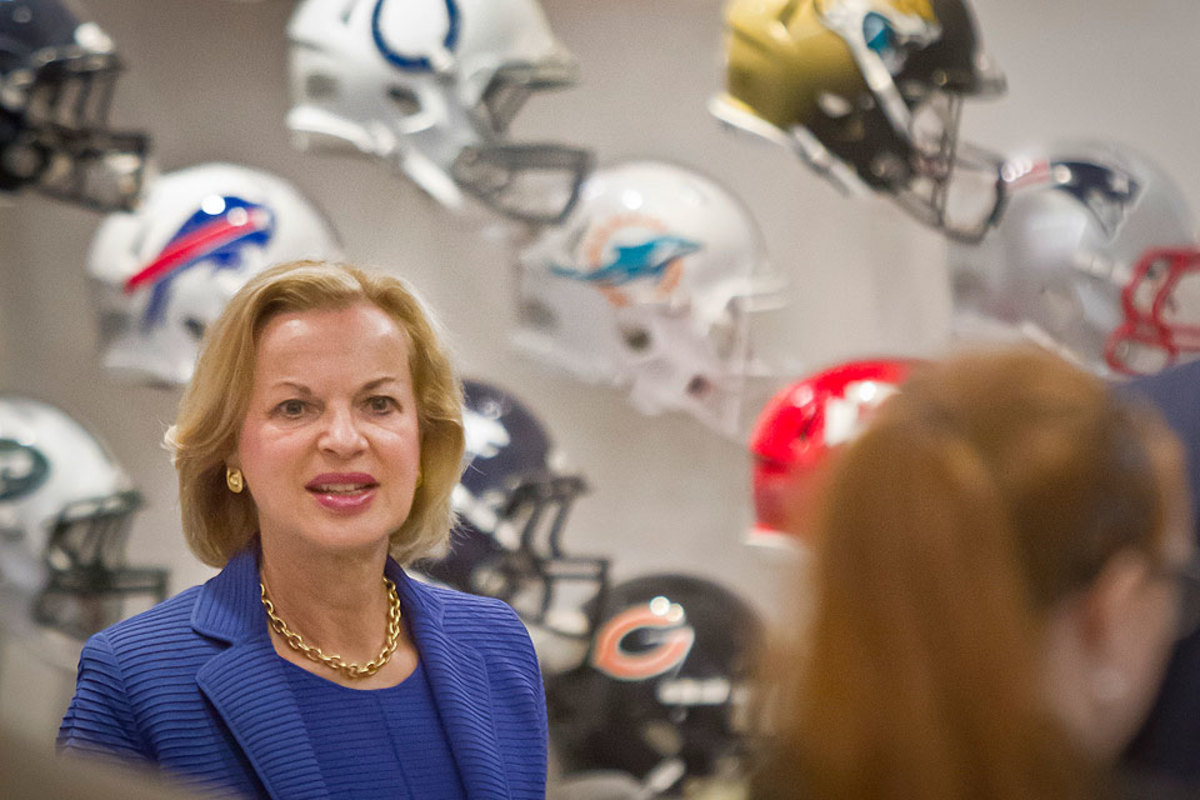
NFL Safety is in Her Hands
In his state of the NFL address before Super Bowl XLIX, Roger Goodell announced that the league would be creating a new position, a chief health and medical advisor, to oversee the league’s health policies. The woman tabbed for the role is Betsy Nabel, president of Brigham and Women’s Hospital in Boston and a professor of medicine at Harvard Medical School. She is not a full-time NFL employee, but rather a part-time advisor who spends one workday a month devoted to her post with the league. With the health and safety of the game taking center stage, she has the ear of Goodell on perhaps the most important issue the NFL faces. Nabel spoke to The MMQB this week about the purpose of her role, the safety of the game and why the NFL selected a cardiologist for the position.
VRENTAS: How would you describe your mission as the NFL’s first chief health and medical advisor?
NABEL: My role is to be a strategic advisor for health and safety issues for the NFL, and to also be thinking more broadly, because I think the NFL has an opportunity to play a national leadership role in health and safety matters that affect all of us who play sports, men and women.
VRENTAS: What have you been working on?
NABEL: I’ve spent my time really listening and learning. I’ve reviewed what the NFL has put into place over the past five years and then I’ve started to think about recommendations for them. I have to say, I’ve been really pleasantly surprised. I really didn’t know that the NFL has the committee structure in place and that it has funded substantial areas of research. ... The league, I believe, has really taken the health and safety of their players quite seriously over the past five years and put into place a nice infrastructure. However, there is a lot of work that needs to be done. We’re just at the beginning.
More Football Conversations
Darrelle Revis’ mom on raising arguably the NFL’s best cornerbackJulius Thomas on hoops background and Jags futureNick Foles on leaving Philly, a new start in St. LouisJoe Banner on Chip Kelly’s overhaul of the EaglesClick here for our complete Talking Football series with Jenny Vrentas
We clearly need to understand the basic biology, the basic mechanisms behind many of the sports injuries that occur in football. We clearly need better ways of making diagnoses on the sideline and in general. And we need to understand good treatment methods. Of the recommendations I’ve made to the commissioner so far, they have included increasing a focus on research, because it is only by funding research that we will gain an understanding into the basic biology, the basic mechanisms by which these injuries occur. You can’t begin to have diagnostic and treatment modalities until you understand the basic biology. That’s clearly needed. The second area is we know behavioral health is closely tied to physical health, and we know there is a growing concern about active and retired players related to depression, suicide, substance abuse. We need to have a better sense of how that connects to physical health issues. And the third recommendation is to enhance communication. I came into this as a football fan, as a mom, as a physician and as a scientist, but I really didn’t understand everything the league is doing or plans to do. Having a dialogue about these issues with the general public is really important. I think that the NFL has an enormous platform by which it can influence the direction of sports health and safety in this country, and that’s one of the reasons why I signed on to be an advisor. I’d like to see the league step up to the plate and take a broader leadership role in this country given how popular the sport is.
VRENTAS: It’s the biggest sports league in America. Football is also an inherently violent sport. When you talk about taking a leadership role in health and safety, in what ways do you mean?
NABEL: I’m a cardiologist, so the way I look at it is I’ve been always been interested in the health and wellness of my patients and of the populations that I serve or take care of, whether it be my hospital or when I was at the National Institutes of Health. One of my career goals is to promote health and wellness across populations. We know exercise and sports are absolutely critical to our life journey and our health and wellness journey, and yet many sports have inherent risks to them. The goal is to make the sport as safe as possible and try to minimize the risk to whatever extent we can. That’s how I begin to look at it.
VRENTAS: You mentioned improving the ability to make sideline diagnoses. How can improvements be made?
NABEL: The physicians on sidelines are quite extensive; they consist of orthopedists, emergency medical specialists, internists, the unaffiliated neuro-trauma consultants. I just think we need to be sophisticated enough at recognizing signs and symptoms of various injuries, whether it be a head injury or a knee injury or a foot injury, so we can assess a player early on and make a determination for further evaluation or return to play, and pull it out of the realm of the fans in the stadium or sports announcers making these sorts of determinations. I don’t think that’s particularly helpful to anybody.
VRENTAS: Does that mean more personnel? Better equipment?
NABEL: It could be more equipment, it could be various tools, it could be reliable [injury] markers, it could be things kept in the locker room. Right now there are some different diagnostic tools in the physical exam that could help in the diagnoses of a concussion, but we don’t know how sensitive or specific they are, so we need to test them in a pilot study. Part of it is encouraging this type of research so that we the league can better improve the ability of team physicians to make diagnoses on the sideline.
VRENTAS: The NFL and GE have awarded grants through their Head Health Challenges to researchers developing things like a eye goggles or a blood test to aid in objective concussion diagnosis. Are these the kinds of things you’re talking about, and testing them in the NFL with a pilot program?
More Football Conversations
Scott Mitchell, former NFL QB and reality TV starRoman Oben, the NFL’s director of youth footballDan Quinn, head coach of the FalconsJoe Namath, MVP of Super Bowl IIIClick here for our complete Talking Football series with Jenny Vrentas
NABEL: I think that might be a recommendation, absolutely. And this is where there is an opportunity for the league to partner with other sports associations as well. So the NFL would have an opportunity to partner with the NCAA or with other leagues in which contact is very prominent, like rugby, soccer or jockey associations.
VRENTAS: This spring, we saw a young and healthy player, Chris Borland, walk away from the game because of concerns about the game’s long-term health risks. What was your reaction to his decision, and do you think it reflects a greater awareness about head injuries and the long-term risks among a younger generation?
NABEL: What I’m observing is the awareness among society in general is much greater now for all aspects of our health. We are thinking through the benefits and risks to many things we do. Think about how much attention we pay to diet and the food we eat and the various extra forms of exercise and how parents obsess about which sports their kids are going to do. Twenty years ago, we just didn’t do that. There are a couple thousand players in the NFL; to have one player say, “I am thinking about the long-term risks, and I’m not going to play,” it’s a relatively small number. But I say, good for him. He’s carefully thought this through. I’m sure he did it after careful consultation with his physician and his family, and I think that’s the kind of critical examination many in our society are going to look at regardless of the sport in which they engage.
VRENTAS: One of the riskiest dynamics in the NFL is that both teams and players want players to return from injuries as soon as possible. Can more be done to take that decision out of players’ hands and minimize the pressure to return?
NABEL: That’s an important question, but it’s a very complicated question, because there are a lot of mutual interests at play creating a little bit of a tension here. I can’t address some of the players’ and coaches’ issues, but I can speak to the health and safety issues. My advice to the commissioner of the league is to make the sport as safe as possible, and how those recommendations get interpreted or acted upon is up to the league and the commissioner.
VRENTAS: Your experience as a cardiologist speaks for itself, but the biggest health issue the NFL faces right now relates to brain injuries and the long-term impacts for players. What do you say to the question of why the NFL selected a cardiologist rather than a neurologist for this role?
NABEL: I think the commissioner and Jeff Miller [the NFL’s senior vice president of health and safety policy] asked me to take this on because I have a track record of thinking broadly around health and wellness, and they were really looking for a strategic advisor who could think very broadly about these issues. The NFL has a committee structure in place with leading experts in head, neck and spine injuries, and foot and ankle, and cardiovascular, that they can turn to for content expertise. Also, remember that what the top issues are today, there may be a different top issue three years from now. My strategic advice has to be durable and high level to span all of the domains of medicine.
VRENTAS: The hospital you lead, Brigham and Women’s Hospital, has ties to the Kraft Group and Kraft family, which owns the Patriots. How will you navigate any potential conflicts of interest that affiliation could create?
NABEL: My focus here is not on any one of the 32 teams. My focus is on all of the teams and all of the players, making this game as safe as possible. I can’t think of an instance [where that would be an issue].
VRENTAS: Why did you want to take on this role?
NABEL: I have had an interest all of my career promoting health and wellness. It began as a cardiologist when I took care of many patients with heart disease and would impress upon them healthy lifestyle habits that I hoped they would take up in order to improve health. It continued when I worked at the National Institutes of Health, and I was at the National Heart, Lung, and Blood Institute. We had women survivors of heart attack coming to us and saying, how come more women don’t know about the risks of heart attacks and heart disease? We started the Red Dress Heart Truth campaign to raise awareness among women of the risk for heart disease. And I saw the tremendous platform that NIH had when it partnered with the fashion industry and women’s journalism to get the message out. And as head of a very busy hospital, I advocate for the health and wellness of all my patients across all the realms of medicine. I really saw the opportunity of working with the NFL to elevate that conversation across a platform that goes across multiple sectors of our society and can really have a very broad impact on sports safety and health and wellness for individuals in our country.
VRENTAS: How many hours a week do you spend working in your role for the NFL?
NABEL: I formally spend one workday a month to this, but I also spend much time on the evenings and weekends. We all multi-task, as they say. I do a lot of reading in the off hours, and emails and phone conversations can accomplish a lot in terms of strategic advice.
VRENTAS: Do you think in time this could—or should—become a permanent position given the health and safety issues the league is tackling?
NABEL: That’s up to the commissioner. That’s not being contemplated at the present time. Our focus is on improving the safety of the game. I’m always a believer that form follows function. Let’s work on the function first and see where the structure goes.
VRENTAS: There has been an unprecedented spotlight on the health and safety of the game of football in recent years. How do you view the level of safety in the game?
NABEL: I can’t speak to the past. I’ve reviewed what’s gone on in the past four to five years, and I’ve really focused on the future.
Follow The MMQB on Facebook, Twitter and Instagram.
[widget widget_name="SI Newsletter Widget”]









































